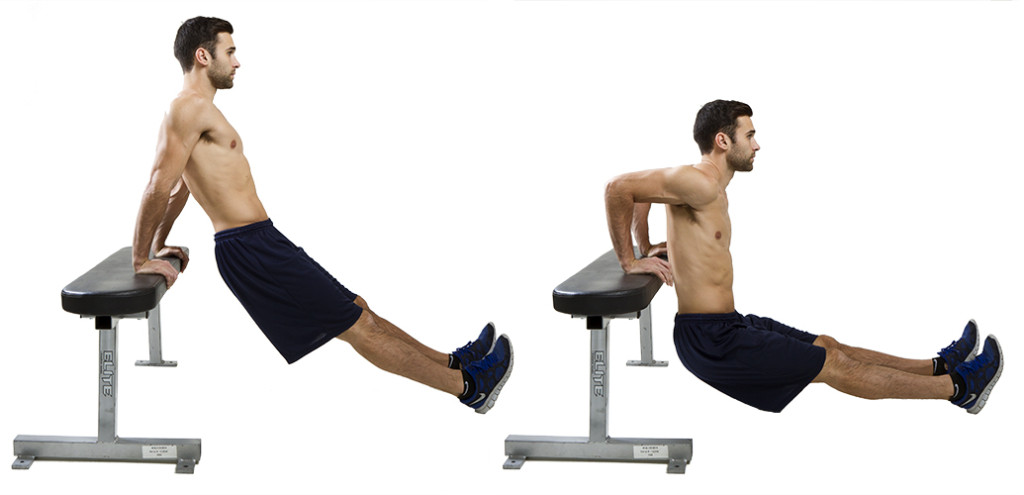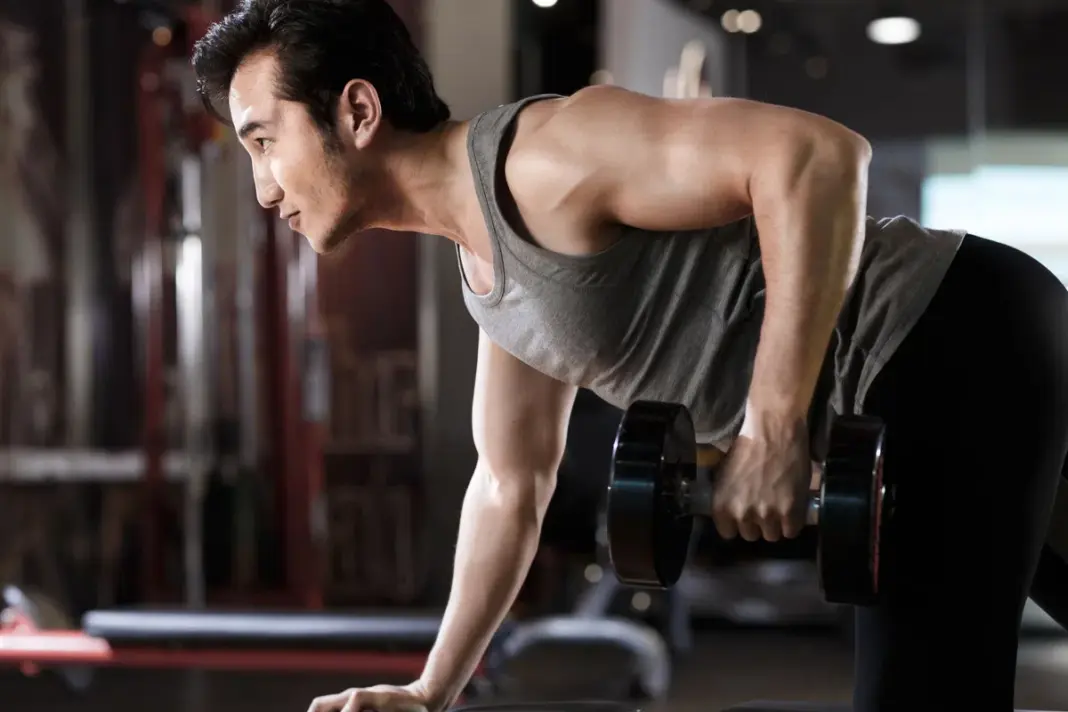Triceps Dips (Bodyweight or Weighted): The Powerhouse Press for Arm Mass and Strength
If you were to strip triceps training down to its most raw and powerful movement, the Triceps Dip would remain standing.
Simple, brutal, and incredibly effective — it’s the bodyweight press that has built thick, powerful arms for generations of strength athletes and bodybuilders.
Often called the “upper-body squat” for the triceps, dips load your arms with heavy mechanical tension, recruit all three triceps heads, and reinforce pressing power across every upper-body lift — from bench press to overhead press.
When done correctly, they pack dense size and strength into the arms, chest, and shoulders.
Bodybuilders love dips for another reason: they give the triceps a functional mass — hard, dense, and visually striking.
When you add external resistance with a dip belt or weight plate, you turn an already potent exercise into a mass-building machine.
Let’s break down how to perform dips for both strength and aesthetics, master the form, and learn advanced strategies for taking this classic movement to the next level.
Muscles Worked
Primary:
- Triceps brachii — all three heads (long, lateral, and medial)
Secondary:
- Chest (lower pectorals)
- Anterior deltoids
- Core (stabilization)
- Forearms and lats (secondary stabilizers)
👉 The dip is one of the few exercises that naturally allows heavy loading through bodyweight or added resistance, which makes it exceptional for overall upper-body development — especially triceps mass and pressing strength.
Why the Triceps Dip Deserves a Permanent Spot in Your Routine
- Compound Overload for Triceps
- Dips allow you to handle your bodyweight (and beyond), making them one of the heaviest direct triceps exercises available.
- Full Triceps Activation
- The movement pattern aligns perfectly with the triceps’ function — elbow extension against resistance.
- Upper-Body Strength Builder
- Improves lockout performance for bench press, push-ups, and other pressing lifts.
- Versatility and Scalability
- Can be done on parallel bars, rings, or assisted machines — suitable for all levels.
- Mass and Density Developer
- Builds deep, thick triceps that contribute to total arm fullness and upper-body balance.
Proper Form: Parallel Bar Dips (Bodyweight Version)
Setup
- Equipment
- Use parallel dip bars or a sturdy dip station.
- If you’re new, an assisted dip machine can help control resistance.
- Grip and Body Position
- Grasp the bars firmly with a neutral grip.
- Start with arms locked out, shoulders depressed (not shrugged).
- Engage your core and cross your ankles behind you for stability.
Execution
- Lowering Phase (Eccentric)
- Inhale and bend your elbows to lower your body in a controlled manner.
- Keep elbows close to your body — don’t flare out excessively.
- Descend until your upper arms are roughly parallel to the floor or slightly below.
- Pressing Phase (Concentric)
- Exhale and extend your elbows to drive yourself back up to the starting position.
- Focus on pushing through your palms and contracting your triceps.
- Keep the torso upright to emphasize the triceps (leaning forward shifts focus to chest).
- Repeat
- Maintain control and full range of motion on every rep.
Weighted Variation
- Setup
- Use a dip belt with a hanging plate or chain between your legs.
- Maintain upright posture and avoid swinging.
- Progression
- Start with 10–25 lbs added once you can perform 10–12 clean bodyweight reps.
- Gradually increase resistance as strength improves.
Key Form Cues
✅ Keep your torso upright for triceps emphasis.
✅ Elbows close to your body throughout the movement.
✅ Lower yourself under control — no dropping into the bottom.
✅ Full extension at the top to complete each rep.
✅ Shoulders stay down and back — avoid hunching forward.
Common Mistakes and Fixes
| Mistake | Problem | Fix |
| Leaning too far forward | Shifts emphasis to chest, reduces triceps involvement. | Stay upright with elbows tucked. |
| Flaring elbows outward | Adds shoulder strain, reduces isolation. | Keep elbows close to ribs. |
| Incomplete range of motion | Misses full triceps activation. | Lower until arms hit parallel, then extend fully. |
| Bouncing or swinging | Reduces time under tension, increases injury risk. | Slow, controlled tempo. |
| Shrugged shoulders | Overloads traps, weakens position. | Depress shoulders and maintain tension in lats. |
Variations
- Assisted Machine Dips
- Ideal for beginners or those managing joint discomfort; adjustable counterweight controls difficulty.
- Bench Dips
- Performed between benches or using bodyweight; excellent for hypertrophy but easier on the load.
- Weighted Dips (Dip Belt)
- Advanced variation for mass and strength; progressively overload over time.
- Ring Dips
- Demands greater stability and core control; advanced movement for full triceps recruitment.
- Negative (Eccentric) Dips
- Focused on slow descents to build strength and control — perfect for progression training.
Programming Guidelines
Hypertrophy (Muscle Growth)
- Sets: 3–4
- Reps: 8–12
- Rest: 90 seconds
- Tempo: 3 seconds down, 1 second up
- Goal: Controlled movement with constant tension for maximum fiber recruitment.
Strength and Power
- Sets: 4–5
- Reps: 5–8 (add weight if necessary)
- Rest: 2–3 minutes
- Goal: Maximize load while maintaining clean form.
Endurance / Pump
- Sets: 3
- Reps: 15–20
- Rest: 45 seconds
- Goal: High-volume metabolic stress to finish triceps training.
Integration into Your Program
Example Arm Day
- Close-Grip Bench Press – 4×6
- Skullcrusher – 3×10
- Overhead Rope Extension – 3×12
- Triceps Dips (Weighted or Bodyweight) – 3×8–12
- Rope Pushdown – 3×15
Example Push Day
- Bench Press – 4×6
- Overhead Press – 3×8
- Incline Dumbbell Press – 3×10
- Dips – 4×8–10
- Lateral Raise – 3×15
Finisher Circuit
- Triceps Dips (Bodyweight) – To Failure
- Rope Pushdown – 15 reps
- Dumbbell Kickbacks – 15 reps
- (Repeat 2–3 rounds for a skin-splitting pump.)
Advanced Training Strategies
- Weighted Progression
- Add small weight increases weekly using a dip belt or chain.
- Paused Reps
- Hold at the bottom of each rep for 1–2 seconds to increase time under tension.
- Tempo Training
- Use a 4-second eccentric to improve muscle control and hypertrophy.
- Superset for Volume
- Pair dips with skullcrushers or rope pushdowns for complete triceps fatigue.
- Partial Reps After Failure
- After reaching failure, perform 3–5 partial reps from the bottom third to intensify the burn.
Bodybuilder’s Tips
💡 Use Bodyweight First: Master strict form before adding resistance.
💡 Stay Upright: Slight forward lean = chest; upright torso = triceps.
💡 Control the Descent: Don’t drop into the bottom position; slow eccentric equals growth.
💡 Add Resistance Gradually: Quality reps matter more than numbers on the dip belt.
💡 Finish with a Stretch: Post-workout triceps stretching enhances recovery and flexibility.
Strength vs Aesthetic Training
| Focus | Training Style | Benefit |
| Strength | Heavier loads (5–8 reps) | Builds pressing power and functional upper-body strength |
| Aesthetics | Moderate weight (8–12 reps) | Enhances size, shape, and muscle density |
| Endurance / Pump | High reps (15–20+) | Improves vascularity and capillary growth |
Safety and Joint Health
- Warm up elbows and shoulders thoroughly with light pushdowns or banded extensions.
- Avoid descending too deep if it causes shoulder discomfort.
- Maintain shoulder depression throughout the lift to protect rotator cuffs.
- Progressively add resistance — don’t overload too soon.
- Strengthen supporting muscles (rear delts, rotator cuff) to prevent imbalance.
Practical Takeaways
✅ Keep the torso upright and elbows tight for maximum triceps emphasis.
✅ Start with bodyweight mastery before adding plates or chains.
✅ Control every rep — tempo and form always trump ego lifting.
✅ Use dips early in your workout for strength or late for a brutal finisher.
✅ Rotate between bodyweight, assisted, and weighted variations for full development.
Conclusion
The Triceps Dip is the bridge between raw pressing strength and sculpted triceps development — a classic movement that delivers real results when trained intelligently. It’s functional, foundational, and fierce — capable of transforming your triceps from an accessory muscle into a powerhouse.
For bodybuilders, it’s the ideal compound to pair with isolation work like skullcrushers and rope pushdowns. For strength athletes, it reinforces lockout stability and pressing dominance.
Master your bodyweight, control your movement, and progressively overload — the dip will repay you with dense, powerful triceps that complete your upper-body armor.
You don’t need fancy machines — just your body, gravity, and discipline. Dips done right are pure muscle alchemy.




